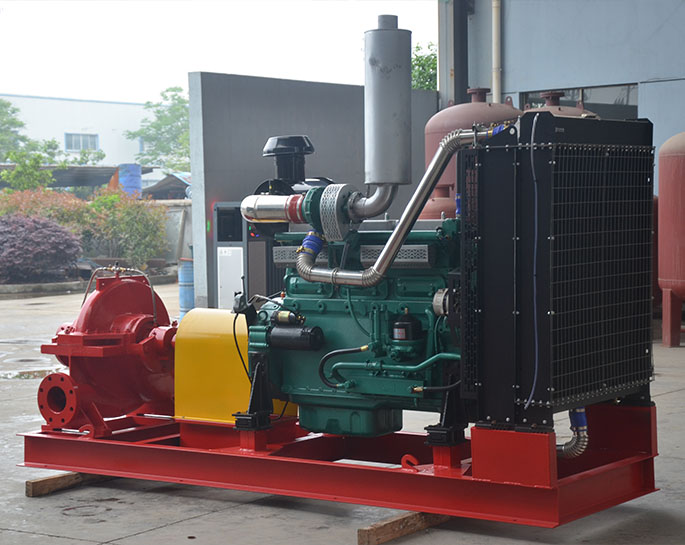Repair method of fire pump after wear and tear
Repairing a fire pump after wear and tear is essential to ensure its continued functionality and reliability. Here's a general guide on the repair process:
-
Assessment and Diagnosis: Begin by conducting a thorough assessment of the fire pump to identify the extent of wear and tear. Look for any visible damage, leaks, corrosion, or worn-out components. This step will help you determine the scope of the repair work needed.
-
Isolation and Safety: Before beginning any repair work, ensure that the fire pump is properly isolated from the power source and is safe to work on. Follow all necessary safety protocols to prevent accidents.
-
Disassembly: If the damage is extensive, you may need to disassemble the fire pump to access the internal components that require repair. Carefully document the disassembly process to aid in reassembly later.
-
Component Replacement: Replace any worn-out, damaged, or malfunctioning components. This might include seals, gaskets, bearings, impellers, motor brushes, and other parts that are critical to the pump's operation. Ensure that you use high-quality replacement parts that are compatible with the pump's specifications.
-
Cleaning and Inspection: Clean all parts thoroughly to remove debris, dirt, and rust. Inspect the internal components, pipes, and connections for any signs of damage that might have been overlooked initially.
-
Repair and Refurbishment: Repair or refurbish components that can be salvaged. This could involve tasks like sanding down rust, re-machining parts, or re-coating surfaces.
-
Testing: Before reassembly, conduct individual tests on the repaired or replaced components. Check for proper operation, alignment, and fluid flow. Also, inspect for leaks and pressure inconsistencies.
-
Reassembly: Reassemble the fire pump carefully, following the documentation you created during disassembly. Ensure that all parts are correctly aligned and secured.
-
Alignment and Calibration: Properly align the motor, impeller, and other components according to the manufacturer's specifications. Calibrate any sensors or control systems to ensure accurate operation.
-
Functional Testing: Once reassembled, conduct a comprehensive functional test of the fire pump. Test its performance under different operating conditions to ensure it's functioning optimally.
-
Leak Testing: Check for leaks by pressurizing the pump and observing all connections and seals closely. Address any leaks immediately.
-
Final Checks and Maintenance: Conduct a final inspection of the entire pump system. Lubricate moving parts as needed, and make sure all connections are secure. Document all the work done for future reference.
-
Documentation: Maintain detailed records of the repair process, including the steps taken, parts replaced, and any issues encountered. This documentation will be valuable for future maintenance and repairs.
-
Preventive Measures: After repairing the pump, consider implementing preventive measures to extend its lifespan. Regular maintenance, periodic inspections, and addressing minor issues promptly can help prevent extensive wear and tear in the future.
If you are not experienced with fire pump repair, it's recommended to consult with a professional technician or a specialized service provider to ensure the repair is done correctly and safely. Fire pump systems are critical for safety, so it's important to ensure their proper functionality.


.png)
.png)

.png)


